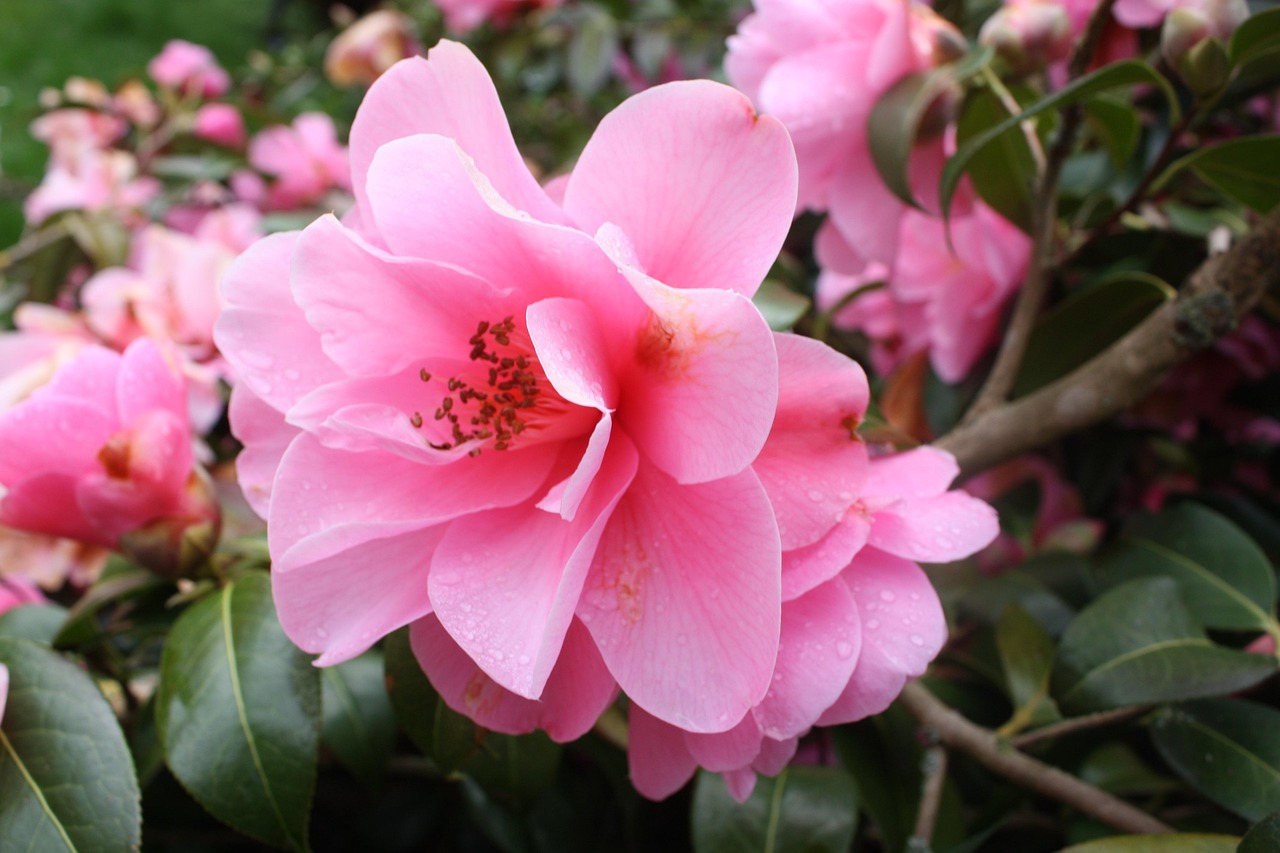Winter Blooms in the South: Choosing the Best Camellias for Arkansas
 Camellias are a beloved addition to Southern gardens, prized for their evergreen foliage
and stunning blooms. These flowering shrubs provide color during the cooler months
when most other plants are dormant. In Arkansas, choosing the right camellia variety
is key to ensuring success, as some cultivars are better suited to the climate than
others.
Camellias are a beloved addition to Southern gardens, prized for their evergreen foliage
and stunning blooms. These flowering shrubs provide color during the cooler months
when most other plants are dormant. In Arkansas, choosing the right camellia variety
is key to ensuring success, as some cultivars are better suited to the climate than
others.
Extending the Camellia Belt
Traditionally, camellias were considered unsuitable for areas outside the mild climate of the camellia belt. However, thanks to the work of Dr. William Ackerman, who introduced winter-hardy hybrids, camellias can now be grown as far north as St. Louis. These hybrids, often referred to as the Frost Series Camellias, were developed through thousands of hand crosses and are winter hardy to at least -10 degrees Fahrenheit.
The U.S. National Arboretum in Washington, D.C., played a significant role in the development of these cold-hardy varieties. After devastating winters in the late 1970s killed nearly all of their camellia collection, the only survivor was Camellia oleifera, a species widely grown in China for its oil-rich seeds. This plant, along with a selection called 'Plain Jane,' became the foundation for the new cold-tolerant hybrids.
Growing Conditions for Camellias in Arkansas
Camellias thrive in well-drained, acidic soil with plenty of organic matter. They prefer partial shade, as too much direct sun can scorch the leaves, especially in the heat of summer. Adequate mulching helps retain moisture and keeps the roots cool. When planting, it’s essential to provide protection from harsh winter winds, as cold snaps can damage flower buds and foliage.
Recommended Camellia Varieties for Arkansas
While traditional camellia favorites like Camellia japonica and Camellia sasanqua can grow well in Arkansas, selecting cold-hardy varieties ensures better success. Some excellent choices include:
- 'Winter's Star' (Camellia oleifera hybrid) – This cold-hardy variety produces lavender-pink single blooms in late fall to early winter.
- 'Winter's Snowman' (Camellia oleifera hybrid) – A vigorous grower with white, semi-double blooms and excellent cold tolerance.
- 'April Kiss' (Camellia japonica) – A compact shrub that produces rose-pink, formal double blooms in mid to late spring.
- 'Kanjiro' (Camellia sasanqua) – A beautiful, early-blooming variety with deep pink, semi-double flowers.
- 'Yuletide' (Camellia sasanqua) – This popular selection features bright red, single flowers with golden stamens, blooming just in time for the holiday season.
- 'Snow Flurry' (Camellia oleifera hybrid) – One of Ackerman’s introductions, featuring white semi-double blooms and excellent cold hardiness.
- 'Survivor' (Camellia oleifera) – A particularly tough variety known for its resilience and delicate white flowers.
- 'Autumn Spirit' (Camellia hiemalis hybrid) – A late-season bloomer with deep pink flowers that provide color well into fall.
Care Tips for Healthy Camellias
- Planting: Dig a hole twice as wide as the root ball and slightly shallower than its depth. Ensure the top of the root ball sits slightly above the soil line to prevent rot.
- Watering: Keep the soil consistently moist but not soggy, especially during the first year.
- Fertilizing: Use a balanced, acid-forming fertilizer in spring after blooming.
- Pruning: Light pruning after flowering helps maintain shape and encourages healthy growth.
- Protection from Cold: During extreme cold, cover young camellias with burlap or frost cloth to protect buds and foliage.
By choosing the right varieties and providing proper care, gardeners in Arkansas can enjoy the beauty of camellias year after year.
By Sherri Sanders
County Extension Agent - Agriculture
The Cooperative Extension Service
U of A System Division of Agriculture
501-268-5394
ssanders@uada.edu